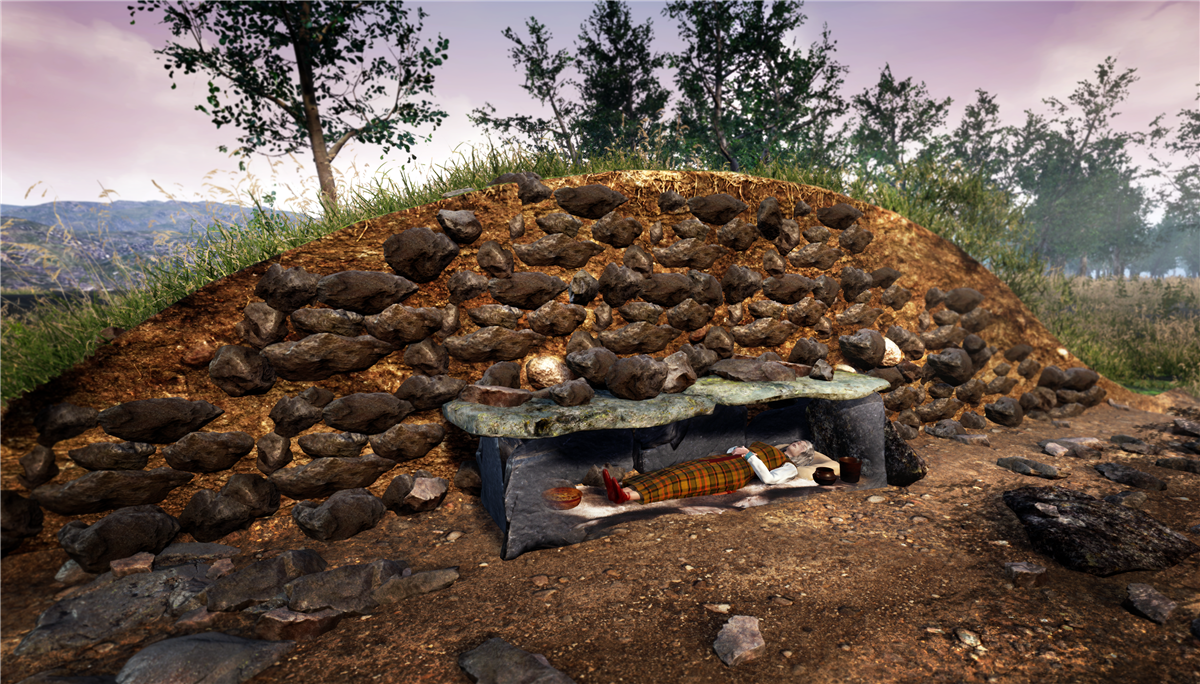According to tradition, Tik in Vik was buried in this burial mound dating from the Iron Age.
In the tails and stories, there is a disagreement as to whether Tik was a man or a woman. In one legend, it is told about three brothers (Grim Ose, Kvelp Moe and Iver Langerumpe paa Velle) and a sister (unknown name) who were going to Volda but ended up in Ørsta in a snowstorm, and thus became the first settlers. In another story there was a family; The Mørejarl family with father (Ivar Langerumpe), mother (Tik) and son (Kvelp), who moved back to Ørsta from the east and that it is the mother who lies in the burial mound in Vik.
The burial mounds were a symbol of a place where the dead could live on. Burial mounds like these have been built as far back as the Bronze Age, but with the time of Christianity, at the end of the Viking Age, this custom disappeared. These grave monuments have been connected to the increasing social divisions and concentration of power in the agricultural society. The building of mounds and piles was particularly widespread in the later Roman period (200–400 AD), the migration period (400–570 AD) and the Viking age (800–1050 AD). Most of the burial mounds in Ørsta can probably be traced back to one of these periods.
Originally, this mound had a transverse dimension of 20 metres, but has been damaged over the years and then formed to its approximate appearance. Jacob Neumann, who was a priest of enlightenment and interested in archaeology in the 18th and 19th centuries, excavated here. An axe and jars were found.
Map:
 Illustrasjon: Arkikon
Illustrasjon: Arkikon